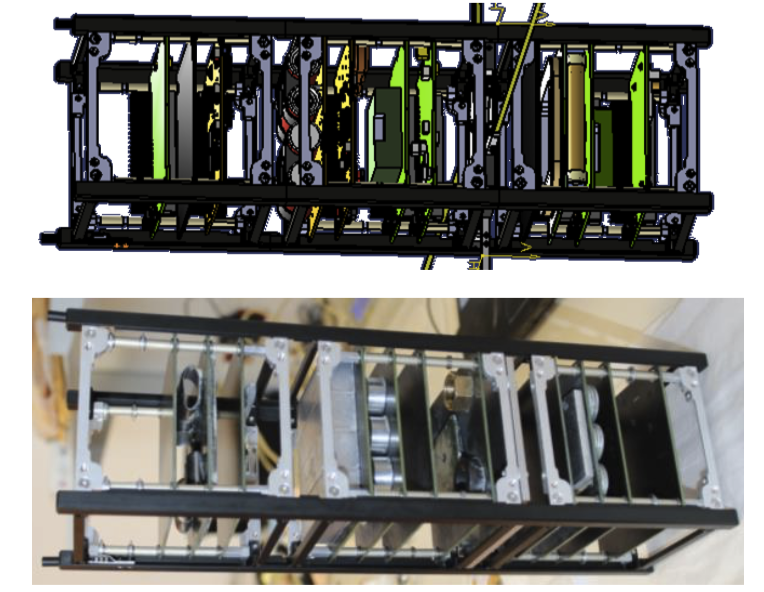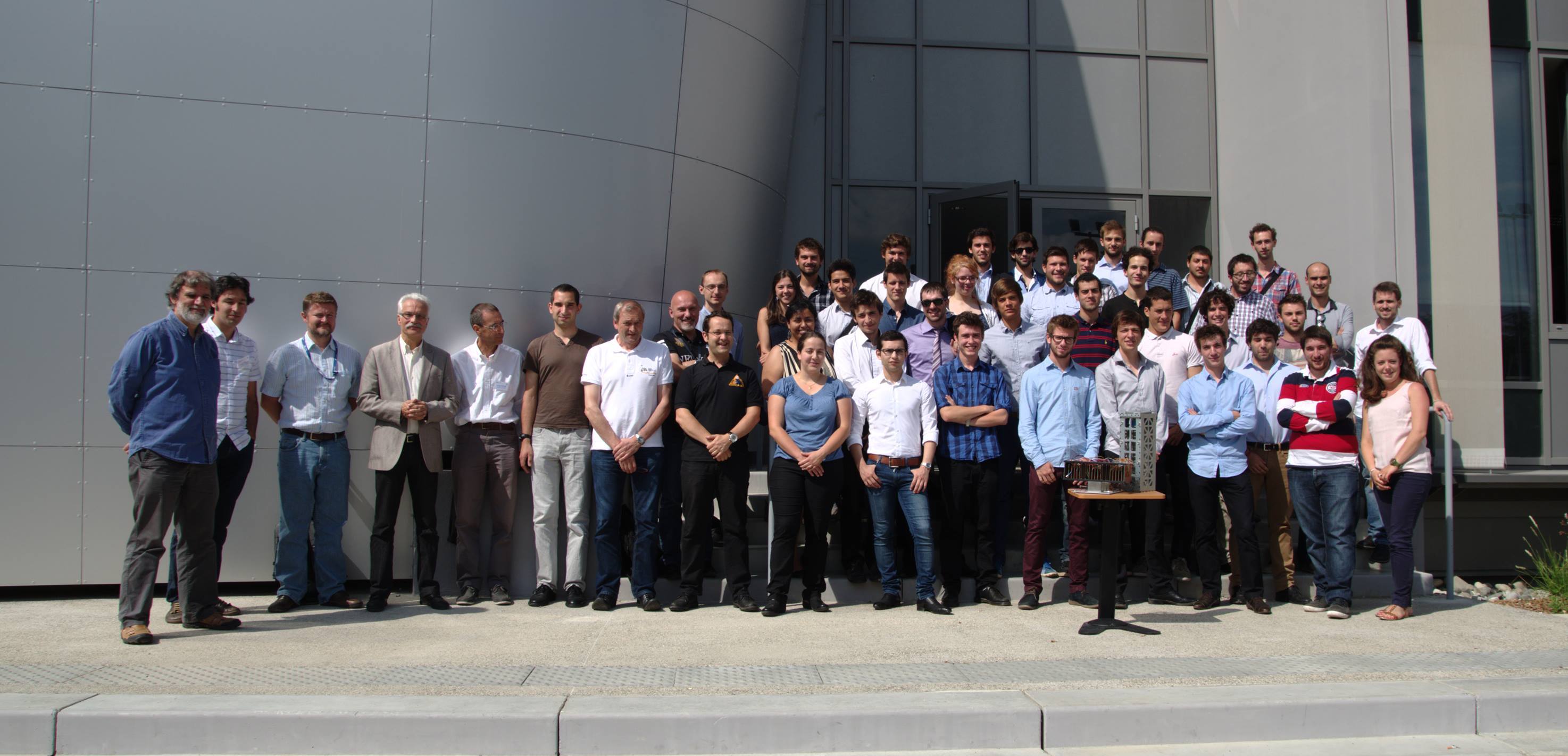EntrySat Project
A 3U CubeSat for atmospheric re-entry study
Head of Mechanical Subsystem - Advisor: Dr. Raphaël Garcia - Oct. 2013 - Jun. 2015
The EntrySat mission had the goal of developping a 3U Cubesat that would help define conditions (pressure, temperature, degradation, etc.) supported during the re-entry phase of space debris. As a result of a wider cooperation involving academic (ISAE & UPS) and research partners (CNES, ONERA & IRAP), the EntrySat was launched from the ISS on July 3rd 2019.
Mechanical Subsystem
As head of the Mechanical-Structural subsystem, I built the mechanical CAD model of the satellite for phases A and B and produced a mass budget that was used in the Preliminary and Critical Design Reviews. I also led the production of the structural and thermal model (STM) that was used in the vibration testing that confirmed that the satellite could withstand the launch loads. This model was also used for thermal validation for in-vacuum thermal testing. This work was presented as part of the EntrySat Critical Design Review, which was approved by a panel of experts from the CNES and granted the selection of our CubeSat for the QB50 mission.
CAD Model
The CAD model was an important element since it allowed us to find the optimal position of all the satellite elements such that the general constraints were fulfilled. As an example, there were several restrictions on the position of the Center of Mass, as well as the total mass of the CubeSat, imposed by the QB50 mission. Using CATIA V5, I developped a complete model of the satellite that integrated all the components while respecting all the set constraints. This model was used to produce a mass budget of the satellite and and to determine its stability during re-entry.



Mechanical Model
Model
For the CDR, several mechanical test had to be performed to assess the appropriateness of the design. However, these tests were not to be performed on the real satellite but in an Structural and Thermal Model (STM), which must had the same mechanical and thermal properties. Using a combination of real components and mock models, the STM was successfully assembled at the ISAE facilities. The contribution of Eduardo Martín López and Daniel Gagneux were critical to the success of the STM development.
Mechanical Testing
Four different tests were planned for the STM as part of the mechanical design qualification: three vibration tests and a shock test. We performed the vibration testing in an electrodynamics shaker at the Clément Ader Institute (DMSM/ICA) facilities thanks to the support of Jean Benoit Alibert.
The STM was instrumented with several piezoelectric accelerometers responsible for measuring the loads underwent by the satellite. In addition, the EntrySat sensors and IMU were mounted to check their performance and robustness against the projected loads.
The accelerometer data collected from this test demostrated that all the components and sensors could undergo the launch loads without getting damaged or becoming loose. With this result, the mechanical assembly was cleared and qualified according to the QB50 mission requirements.

Thermal Model
Along with the thermal subsystem team (led by Louis-Jerome Burtz), we developped a thermal model of the satellite for in-vacuum thermal testing. We designed and assembled the thermal model, which replicated the thermal properties of the EntrySat and instrumented it with thermal sensors for monitoring during the in-vacuum test. The assembly and the test were performed at the IRAP clean room facilities with the assistance of local experts.
The results obtained from this test were critical to the success of the Critical Design Review.

The Team
During my two-year involvement with the project I had the change to work with an amazing team of students and researchers in what led to a succesfull Critical Design Review. The team was led by David Mimoun and Raphaël Garcia, from whom I had the pleasure to learn from.
